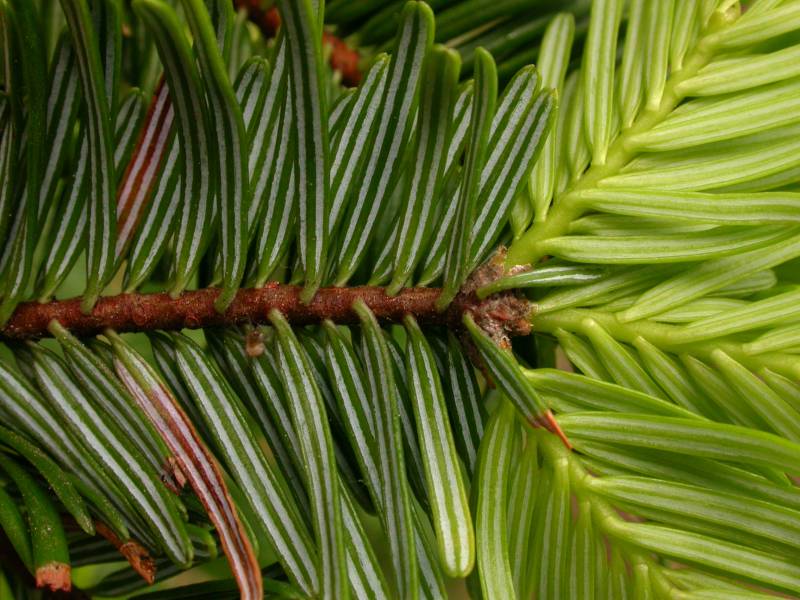Abies procera
Abies grandis
noble fir
grand fir
Bark readily flaking, grayish-brown, dark reddish-brown beneath.
Bark grayish to light brown, smooth to shallowly ridged; young twigs pubescent.
Leaves bluish-green to silvery, 1.5-3 cm. long, thicker in the middle, crowded, stiff and upturned, with two white bands on the lower surface and a single broad band on the upper.
Needles nearly flat, 2-4 cm. long, blunt to notched, spreading horizontally, not concealing the branch, dark green with 2 whitish stripes beneath.
Staminate cones reddish, pendant and catkin-like, 7-20 mm. long, on the lower side of branches near the middle of the tree or above; ovulate cones only near the top of the tree, single and erect, 11-13 cm. long and up 6 cm. thick, the scales dark reddish-brown, nearly concealed by ruffle-edged, slender-pointed, straw-colored to olive bracts.
Staminate cones yellowish, pendant and catkin-like, 7-20 mm. long, on the lower side of branches near the middle of the tree or above; ovulate cones only near the top of the tree, single and erect, yellowish-green to green, 6-11 cm. long and 3.5-4 cm. thick, the subtending bracts concealed by the scales.
Abies procera
Abies grandis
- Local floras:
CA,
OR,
WA
- Local Web sites:
CalFlora,
CalPhotos,
Flora NW,
PNW Herbaria
WildflowerSearch
iNaturalist (observations)
USDA Plants Database
- LBJ Wildflower Center
- SEINet
- Plants of the World Online
- Encyclopedia of Life
- Wikipedia
- Google Image Search
- Local floras:
BC,
CA,
OR,
WA
- Local Web sites:
CalFlora,
CalPhotos,
Flora NW,
PNW Herbaria
WildflowerSearch
iNaturalist (observations)
USDA Plants Database
- LBJ Wildflower Center
- SEINet
- Plants of the World Online
- Encyclopedia of Life
- Wikipedia
- Google Image Search



